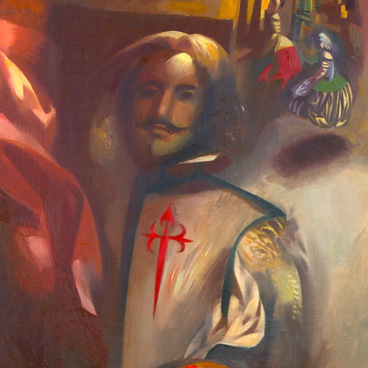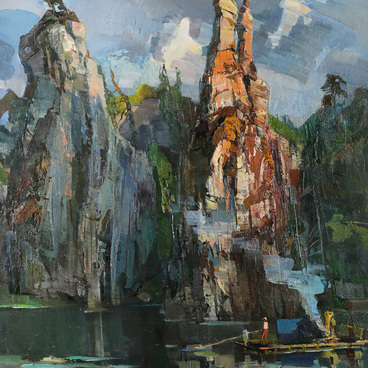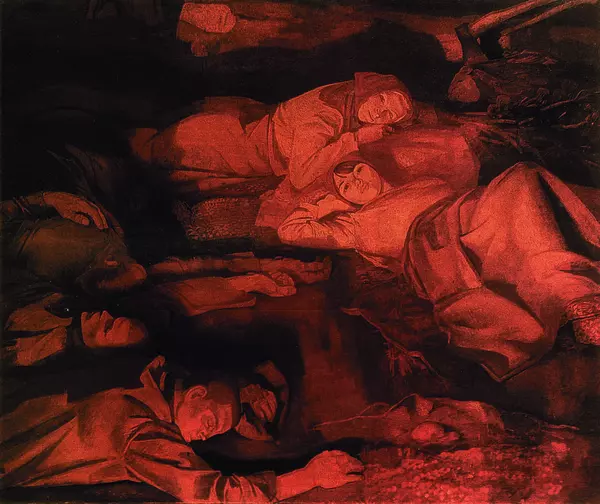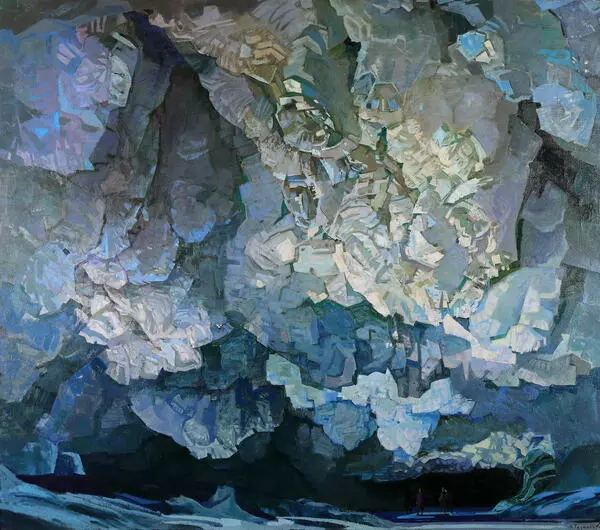The artist Nikolay Chesnokov enjoyed the Ural nature ever since childhood. He was born in the Perm region into a family of a forester and grew up around a forest cordon. This environment eventually became the main source of inspiration for his work. For several decades, starting from the 1950s, Nikolay Chesnokov traveled extensively in the southern, central, and northern Urals.
The 1963 trip to the Polar Urals, the highest point of the Ural Mountains, was of particular importance to the artist. For several months he lived in a settlement built for geological expeditions. Every day he climbed the mountains with a sketchbook in search of new views and impressions. Chesnokov loved winter landscapes and was not afraid of the cold. Even sub-low temperatures did not prevent him from painting, despite fingers freezing stiff and paints congealing inside tubes.
The harsh and majestic beauty of the North inspired the artist to create a series of picturesque landscapes dedicated to the region including “White Night. The Polar Urals”. The painting reflected the monumental images and profound appeal of the “austere style”, which in the Ural art was represented by Nikolay Chesnokov.
The majestic northern expanses include long ridges of gently sloping mountains partly covered with stripes of snow. In the foreground, there is a small plot scene: two reindeer herders dressed in national hooded clothes with bright decorative stripes hold the animals on a leash. The artist used these proud figures to show the peculiar nature of human existence in these endless lands of cold. The painting is distinguished by the sincere and unique perception of nature and the comprehensive composition of the subarctic summer. The artist managed to capture that rare moment when the midnight sun occurs for a short period of June and July with its special atmosphere of silence hovering above the centuries-old Northern territories. The artist valued this magnificent landscape for one more reason.
Usually, Chesnokov associated painting with great stress. According to his memoirs, he “slaved over paintings for hours, then wiped it all away and started over. Only once did I succeed to finish the work in just five days without any alterations, and that was the ‘White Night’… this was, unfortunately, a rare occurrence for me.”
The 1963 trip to the Polar Urals, the highest point of the Ural Mountains, was of particular importance to the artist. For several months he lived in a settlement built for geological expeditions. Every day he climbed the mountains with a sketchbook in search of new views and impressions. Chesnokov loved winter landscapes and was not afraid of the cold. Even sub-low temperatures did not prevent him from painting, despite fingers freezing stiff and paints congealing inside tubes.
The harsh and majestic beauty of the North inspired the artist to create a series of picturesque landscapes dedicated to the region including “White Night. The Polar Urals”. The painting reflected the monumental images and profound appeal of the “austere style”, which in the Ural art was represented by Nikolay Chesnokov.
The majestic northern expanses include long ridges of gently sloping mountains partly covered with stripes of snow. In the foreground, there is a small plot scene: two reindeer herders dressed in national hooded clothes with bright decorative stripes hold the animals on a leash. The artist used these proud figures to show the peculiar nature of human existence in these endless lands of cold. The painting is distinguished by the sincere and unique perception of nature and the comprehensive composition of the subarctic summer. The artist managed to capture that rare moment when the midnight sun occurs for a short period of June and July with its special atmosphere of silence hovering above the centuries-old Northern territories. The artist valued this magnificent landscape for one more reason.
Usually, Chesnokov associated painting with great stress. According to his memoirs, he “slaved over paintings for hours, then wiped it all away and started over. Only once did I succeed to finish the work in just five days without any alterations, and that was the ‘White Night’… this was, unfortunately, a rare occurrence for me.”



